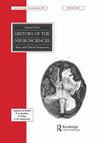Ethical questions arising from Otfrid Foerster’s use of the Sherrington method to map human dermatomes
IF 0.3
3区 哲学
Q3 HISTORY & PHILOSOPHY OF SCIENCE
引用次数: 0
Abstract
ABSTRACT Otfrid Foerster (1873–1941) is well known for his maps of human dermatomes. We have examined the history of the development of his protocols for mapping dermatomes by analyzing his lectures and publications from 1908 to 1939, focusing on his Schorstein Memorial Lecture in 1932 and his use of the isolation (Sherrington) method, in which a single dorsal root is spared in a sequence of resections (dorsal rhizotomies). Because of the absence of medical records for Foerster’s patients, we also review eyewitness accounts of his operating technique, his occasional comments on patients, and the issue of consent. There appears to be no medical justification—at that time or currently—for Foerster’s use of the Sherrington method to map dermatomes L1, L5, S1, and S2, and in our view, these results were obtained unethically. Hence, clinicians and researchers who use his maps should acknowledge those whom Foerster exploited in order to produce them.奥特弗里德·福斯特使用谢林顿方法绘制人类皮肤组织图所引起的伦理问题
奥特弗里德·福斯特(1873-1941)以绘制人类皮肤组织图而闻名。我们通过分析他从1908年到1939年的演讲和出版物,研究了他绘制皮鞘的方案的发展历史,重点是他1932年的Schorstein纪念演讲和他使用的分离(Sherrington)方法,在一系列切除(背根切断术)中保留单个背根。由于缺乏Foerster病人的医疗记录,我们也回顾了目击者对他的手术技术的描述,他偶尔对病人的评论,以及同意的问题。Foerster使用Sherrington方法来绘制L1、L5、S1和S2的皮肤组织图谱,无论当时还是现在,似乎都没有医学上的依据,在我们看来,这些结果是不道德的。因此,使用他的地图的临床医生和研究人员应该感谢那些为了制作这些地图而剥削的人。
本文章由计算机程序翻译,如有差异,请以英文原文为准。
求助全文
约1分钟内获得全文
求助全文
来源期刊

Journal of the History of the Neurosciences
社会科学-科学史与科学哲学
CiteScore
1.00
自引率
20.00%
发文量
55
审稿时长
>12 weeks
期刊介绍:
The Journal of the History of the Neurosciences is the leading communication platform dealing with the historical roots of the basic and applied neurosciences. Its domains cover historical perspectives and developments, including biographical studies, disorders, institutions, documents, and instrumentation in neurology, neurosurgery, neuropsychiatry, neuroanatomy, neurophysiology, neurochemistry, neuropsychology, and the behavioral neurosciences. The history of ideas, changes in society and medicine, and the connections with other disciplines (e.g., the arts, philosophy, psychology) are welcome. In addition to original, full-length papers, the journal welcomes informative short communications, letters to the editors, book reviews, and contributions to its NeuroWords and Neurognostics columns. All manuscripts are subject to initial appraisal by an Editor, and, if found suitable for further consideration, full- and short-length papers are subject to peer review (double blind, if requested) by at least 2 anonymous referees.
 求助内容:
求助内容: 应助结果提醒方式:
应助结果提醒方式:


